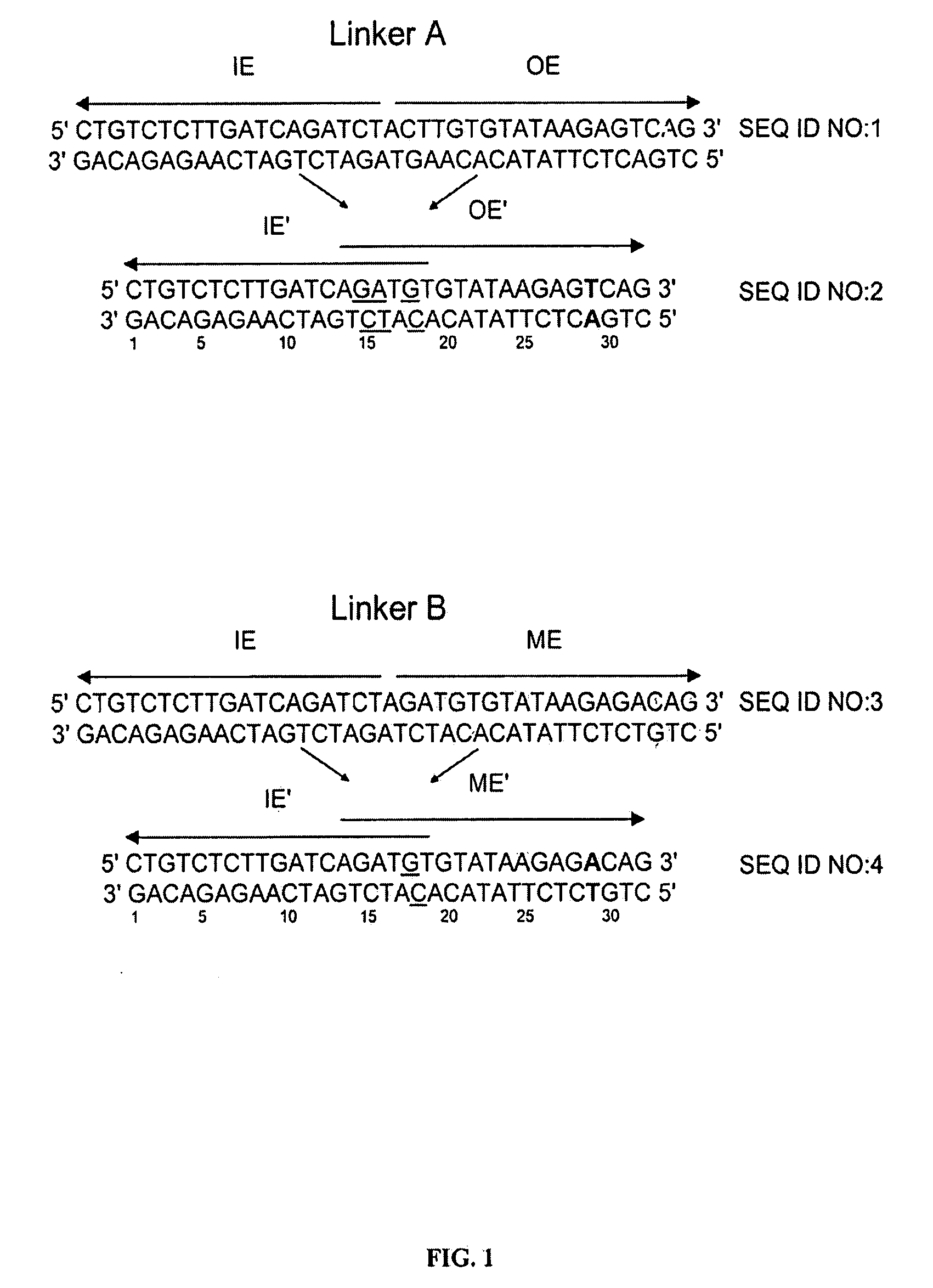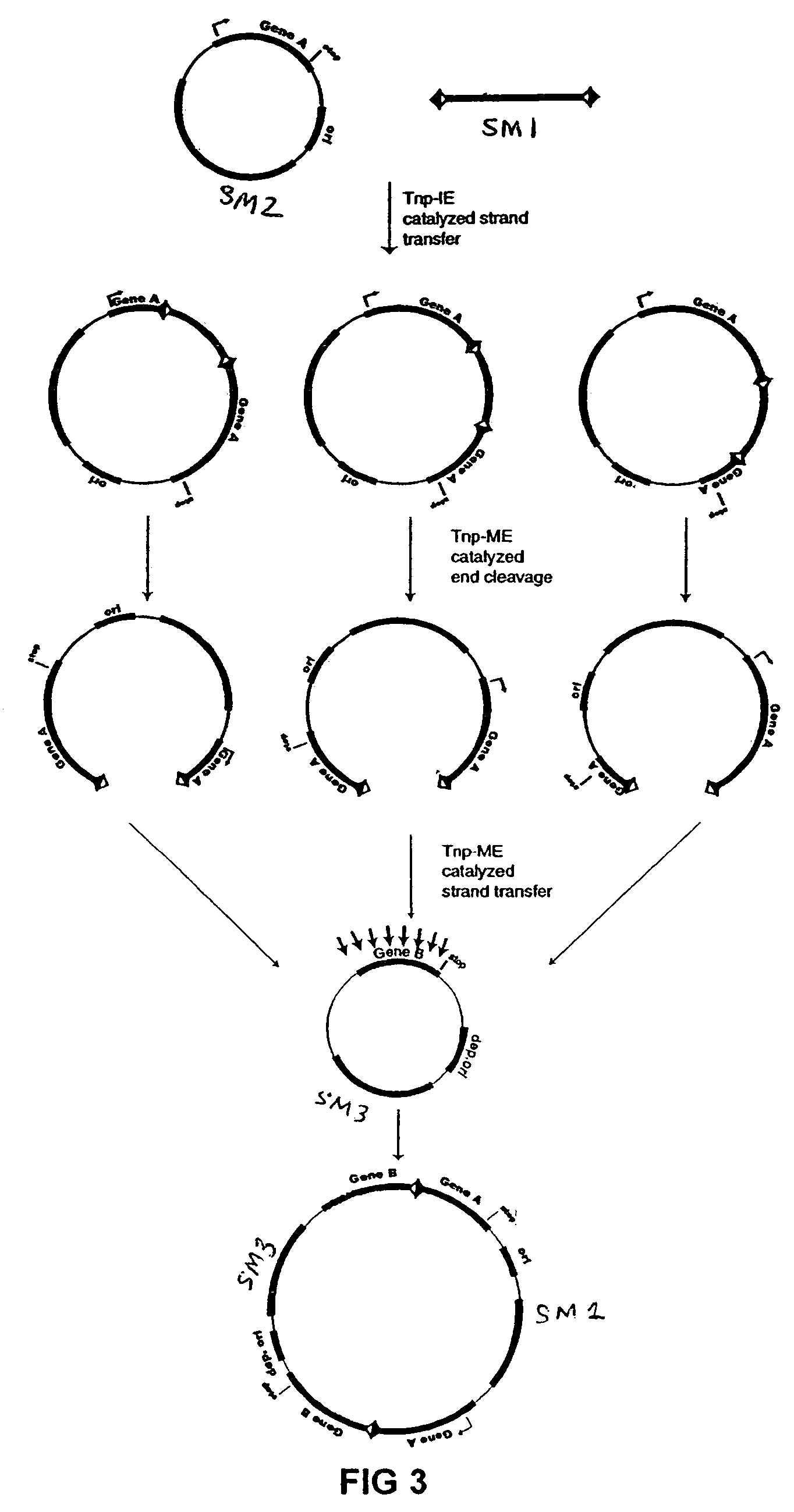Double transposition methods for manipulating nucleic acids
a nucleic acid and double-transposition technology, applied in the field of double-transposition methods for manipulating nucleic acids, can solve the problems of complex existing methods for gene shuffling and chromosome manipulation, and do not provide sufficient manipulative control to meet the technological goals above, and achieve the effect of high level of variability
- Summary
- Abstract
- Description
- Claims
- Application Information
AI Technical Summary
Benefits of technology
Problems solved by technology
Method used
Image
Examples
example 1
Restoration of Chloramphenicol Acetyl Transferase (CAT) from N- and C-Terminally-Truncated Genes
[0074]Plasmid Vectors
[0075]Plasmids were maintained in E. coli K12 (DH5α), except plasmids that contained a π-dependent origin of replication which were maintained in EC100 pir-116 cells. Plasmids were purified using a quiafilter midi kit (Quiagen). Pre-cleaved transposons were released from the appropriate purified plasmids by cleavage with a restriction enzyme and were then purified by electrophoresis and gel extraction using the quiaquick gel purification kit (quiagen).
[0076]The plasmid vectors for the first approach to gene fusion were as shown in FIG. 2. A first plasmid containing a kanamycin resistance gene flanked by one IE and one IE / OE linker end (Linker A) was constructed using standard techniques from starting plasmid pGT4 (SEQ ID NO:8) which encodes a kanamycin resistance gene flanked by IE sequences. This plasmid was the source of pre-cleaved transposon, which was released fr...
example 2
Deletions and Identification of Essential Genes
[0086]Media. For all experiments we used Luria broth liquid or plates media adjusted with antibiotics if needed as follow: chloramphenicol 20 mg / L, kanamicin 40 mg / L, ampicillin 100 mg / L.
[0087]Bacterial strains. E. coli K12 strain MG1655 with a known sequence of chromosomal DNA (Blattner et al. 1997) was used for making deletions. E. coli K12 strain DH5α (Sambrook at al. 1989) was used for DNA manipulations.
[0088]FIG. 9 depicts the transposons used in this Example. Transposon TnDEL7 was designed for inducing deletion of dispensible genetic material and does not have an origin of replication, thereby allowing the immediate isolation of deletions after induction. Transposon TnDEL8 contains a conditional (regulated) origin of replication and was used to maintain deleted genetic material in the cell on a plasmid until elimination is triggered, as described below. The selectable markers and other attributes of each transposon are as shown in...
PUM
 Login to View More
Login to View More Abstract
Description
Claims
Application Information
 Login to View More
Login to View More - R&D
- Intellectual Property
- Life Sciences
- Materials
- Tech Scout
- Unparalleled Data Quality
- Higher Quality Content
- 60% Fewer Hallucinations
Browse by: Latest US Patents, China's latest patents, Technical Efficacy Thesaurus, Application Domain, Technology Topic, Popular Technical Reports.
© 2025 PatSnap. All rights reserved.Legal|Privacy policy|Modern Slavery Act Transparency Statement|Sitemap|About US| Contact US: help@patsnap.com



